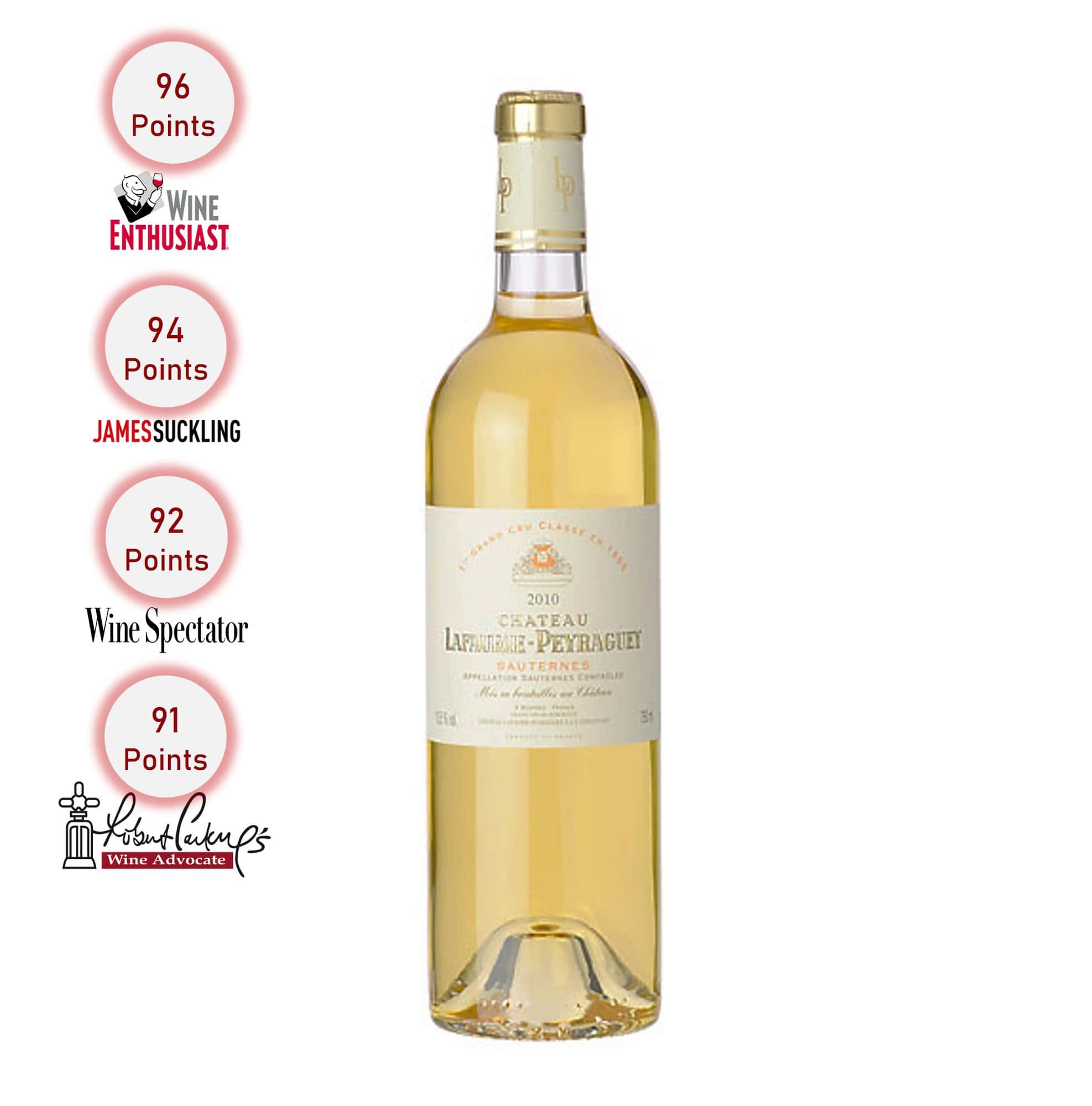75cl / 14.5%
“Big, concentrated botrytis flavors, layering the honey with the rich dried fruits.
This is a powerhouse of a wine, densely structured.”
~ Wine Enthusiast
RM280.00
Out of stock
Out of stock
“The 2010 Lafaurie-Peyraguey dishes up fragrant notes of jasmine, musk perfume, spiced pears and apple tart with nuances of honeycomb and praline plus a waft of chalk dust. The full-on decadent palate possesses impressive tension with loads of spicy sparks and a mineral-laced finish. Lookin’ good right now and should cellar a further 12-14 years.” ~ Robert Parker’s Wine Advocate
Colour: Pale to medium lemon-gold
Aroma: The nose is aromatic, elegant and offers a beautiful aromatic power (full of freshness and balance). It reveals notes of candied lemon, quince, small notes of zests associated with fine touches of crystallized lemon, zests as well as fine hints of mango, apricot and almond.
Palate: The palate is fresh, mineral, well-balanced and offers fat, richness, roundness, precision as well as a small suavity, a fine acidulous frame, a good freshness, tension and a small straightness. On the palate this wine expresses notes of candied quince, candied lemon, small notes of lime zests, a racy minerality associated with very fine hints of exotic fruits, almond as well as a very discreet hint of sweet spices, vanilla and chocolate. A good toasted persistence in the finish.
Grape Varieties: Sémillon with a small amount of Sauvignon and Muscadelle from 40 years old vines
Aging: French oak barrels (40-70% new)
Awards: 96pts Wine Enthusiast, 94pts – James Suckling; 92pts – Wine Spectator; 91pts – Wine Advocate-Parker
Château Lafaurie-Peyraguey is a Premier Cru Classé wine estate in the Sauternes appellation, south of Bordeaux city. The château is located on a hill just outside the historic commune of Bommes, and dates back to the 13th Century.
Chateau Lafaurie-Peyraguey has a striking appearance, rising out of this gently rolling countryside. The walls surrounding it give it a Hispano-Byzantine look. Its XIIIth century gateway and castle towers, along with the main building rebuilt in the XVIIth century, are tangible proof of its age. It became a wine estate in 1618, and subsquently Mr Lafaurie purchased it during the Revolution, in 1794, and his outstanding knowledge of things of the earth brought the vineyard immediate renown, which was carried on by Mr D. Cordier who became owner in 1917. It is rightly described as having the extravagance of perfection.
The château’s 36-hectare (89-acre) estate neighbors Château d’Yquem, which lies roughly a kilometer (0.6 miles) to the southeast. Châteaux Rayne Vigneau and Sigalas-Rabaud lie to the immediate southwest and northwest respecitvely. Lafaurie-Peyraguey’s vineyards are composed of silica-gravel and clay-gravel soils and planted to 93 percent Sémillon, six percent Sauvignon Blanc, and one percent Muscadelle. The estate’s vines average 40 years old, although the oldest date back to 1926.The château gets its name from two historic owners – the Peyraguey family who gave their name to the property in the 17th Century and later, Pierre Lafaurie, who acquired the estate in the French Revolution (its prior owner was guillotined in Bordeaux). In 1855, it gained Premier Cru Classé status in the classification of Sauternes and Barsac.

| Brand | |
|---|---|
| Country | France, Sauternes |
| Grape Variety | Sauvignon Blanc, Sémillon |
| Product Type | White |
| Return Policy | Non-Returnable : This product is non-returnable due to exclusivity/consumable nature of the product. |
| SID | D06V |
Discover our diverse range of flavourful alternatives, ready to surprise and delight your palate.
Industry-leading security powered by iPay88 & Stripe.
Besides Visa & Mastercard, we also accept T&G, Grab, and other eWallets